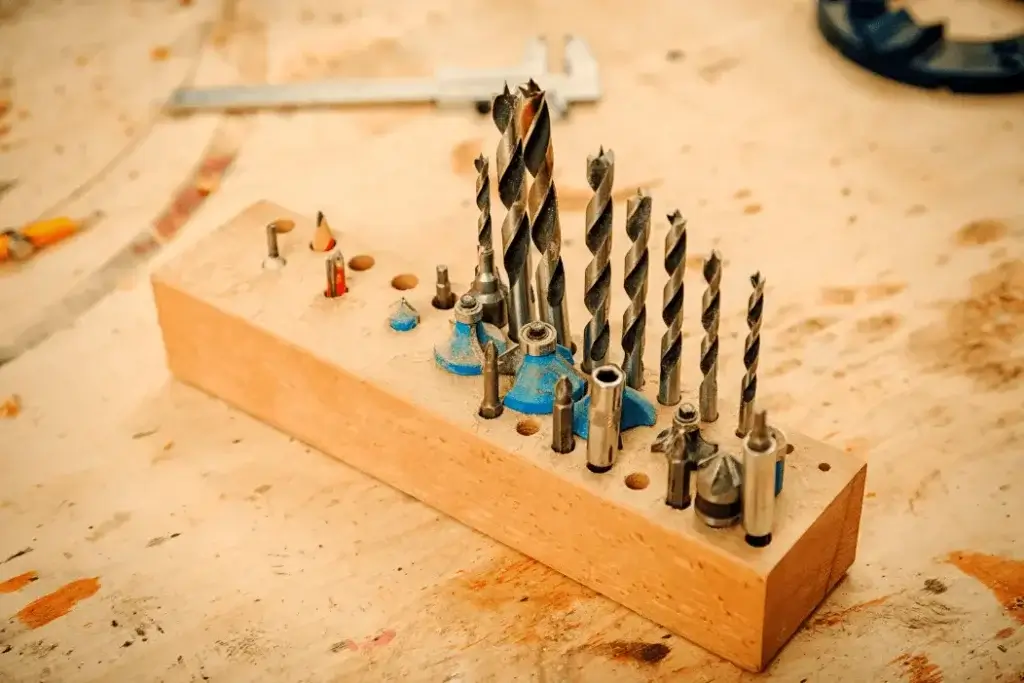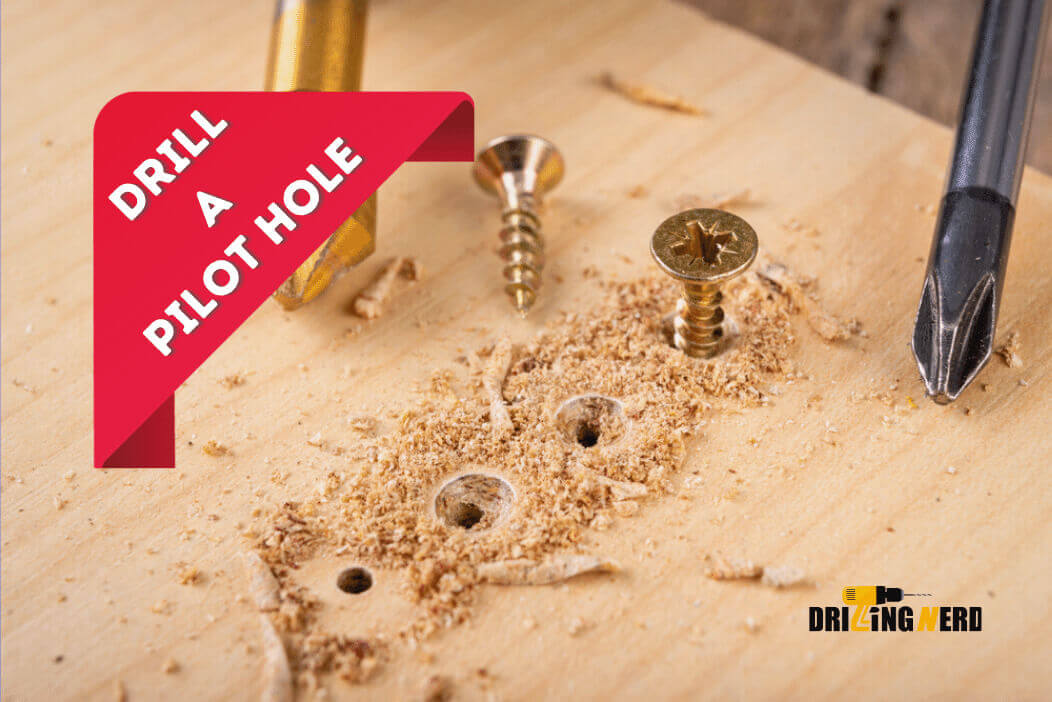Now it’s easy to drill a lock to retrieve your chequebooks, property papers, and other valuable items. However, you require adequate knowledge of how to drill a door lock or wardrobe lock.
You only need the right tools to drill a lock, and it’s simple. You’ll need a drill machine, hammer, drilling bits, and a screwdriver.
You do not need to be concerned about drilling. We’ll explain what tools you need and how to drill a lock.
Easy Steps to Drill Out a Lock:
You can drill a lock at home if you have the right tools. It will only cause damage if the user has prior knowledge of the tools, including drill machines and drill bits.
Lock drilling is the final method for gaining access to locks that cannot be opened using other methods.
Thoroughly check the lock to choose drill bits: All alarms should be turned off before attempting to drill a lock. Utilize a 4 mm drill bit. Depending on the safety, smaller drill bits may be appropriate. People typically use 4mm or 3mm drill bits for standard locks. The 3mm drill bit is ⅛ inches. The 3mm drill bit is 0.16 inches.
- Acquire Suitable Tools:

Using your hands to unlock a door lock is very challenging. The ideal drill machine for this job would be well-maintained and powerful.
Drill bits in various sizes are available. The drill bit size and lock size must be compatible. You can determine the size of the drill bits by trying a few times with multiple drill bits.
- Insert a 4MM or 3MM Drill Bit:

To drill into the mechanism, you need a tiny drill bit. You don’t have to drill out. To destroy the lock’s pins, the purpose is to drill a hole through the cylinder. For your information, some locks have five tumblers, and some have six tumblers.
- The locks drilling:

Penetrate the lock cylinder with a drill. You must drill the lock from the top corner. The drill will help to destroy the tumbler pins in the lock. The number of tumblers in a lock can range from five to six or even more.
Each time the drill bit comes into contact with a pin, you’ll feel the resistance; as the bit subsequently cuts through the pin, there will be minor resistance.
If you feel the drill is stuck inside in metal tumblers or you feel high resistance. You have to change the drill machine mode to reverse mode. This mode will rotate the drill in the opposite direction. You can now pull the drill slowly and steadily. After pulling the drill out, change the drill mode to clockwise again and start drilling again. Make sure to drill until all the tumblers are cut down.
Drilling inappropriately can result in self-injury. Additionally, it would be best to put on safety gear like safety glasses.
- Drilling at Snail’s Speed:

To avoid breaking the drill bit, you must drill with a great temperament. Take your time to drill or press too hard.
If the bit is difficult to drill in the lock, stop drilling immediately and pull out the drill in reverse mode. Lubricate the drill bit and start trying again. If it gets challenging to drill even by trying again, you can use a more significant drill bit from the one you used before.
If you force to drill, you may break the drill tip, or even you could damage the lock.
- It’s Your Turn to Use a Screwdriver:

We commonly use two types of screwdrivers. These types include Philips head screwdrivers and Flat head screwdrivers, even though there are many more types.
Now you must choose the flat-head screwdriver to insert in the hole. Turn the screwdriver the same as you turn the key to unlock the door. The screwdriver will easily and without resistance rotate in the hole if you successfully drill through the tumblers.
This free rotation reflects that the tumblers are free to move, and while drilling, you were successful in penetrating in tumblers.
- Dismantle the Lock:

This is the final step. You must completely dismantle the cylinder lock if you are still unable to open your lock. We must destroy the entire lock assembly.
You can forward this post to your friends if you find it useful. When a key is lost, this will also enable them to open their locks.
Attempt to Pick Your Lock:
Everybody secures their doors at night to protect their loved ones and belongings. It is easy to pick your lock at home in less than five minutes. All you need is to understand the lock mechanism. You may call the locksmith to learn about the lock mechanism. If else, you can search the mechanism on google by entering the lock model number.
It sounds fantastic and easy to pick a lock at home in five minutes, but it is technical. In some states, picking a lock is illegal, so you must inform the relevant authorities.
You Can Pick the Lock at Home by Using Two Ways:
- Lock Pick Gun or Snap Gun:
You cannot use a pick gun on any complicated lock. In other words, this gun is also known as a snap gun. You can use this gun without any additional training and knowledge.
The Snap gun has a needle inside it. While picking your lock, you need to insert the pick gun needle in the lock. The snap gun can also have an internal hammer in it. When you press the button, the needle and hammer work together to move the tumblers up from the shear line.
You can adjust the hammer tension using the snap gun wheel. You have to analyze how much pressure you need to pick your lock. You can examine this by adjusting different hammer tension two to three times.
You can move the plug quickly to open your lock when the tumblers are above the shear line.
- Tension Wrench:
You need two tension wrenches. One tension wrench must be straight, and the other should be in an L-shape. You use the L-shape tension wrench to lift the pin set. While lifting the pin set, you can get to know its specific sound.
To access the tumblers, use the wrench in the shape of an L and then apply some pressure to the pressure wrench in the shape of a straight bar. Until all the driver pins have been moved over the shear line, you will need to keep lifting pins with your pick and exerting force with your wrench, which is a relatively simple action.
Once all the tumblers rise above the shear line, the straight tension wrench will start to move. You are already exerting pressure on it. Now your lock is open with any destruction.
- Bump Key:
You may say it is a master key. You can also use this for typical tumbler locks. For its working, you need to put the key in and exert some pressure. Typically you have to use the pullback method. This bump you will exert by force will help the pins to move upwards.
When the pins move upwards, you can open the lock by rotating the master key. Repeat this process until the pins move upwards toward the shear line.
Safety Requirements:
The best course of action is to take a secure one. The best approach is the safest approach. This reflects that while working, always pay attention to safety.
While drilling a cylinder lock, you only need suitable gloves, safety shoes, and safety glasses. Prevention is preferable to treatment.
Frequently Asked Questions:
Bottom Line:
We hope you will find these lock-opening and drilling techniques enjoyable.
You can drill a lock by following the above steps without harming yourself or damaging your door or property.
You must know the lock mechanism and tumblers for drilling a lock cylinder. These methods will be effective only on conventional cylinder locks having tumblers.
We had fun writing this manual, and we hope you find it useful.









